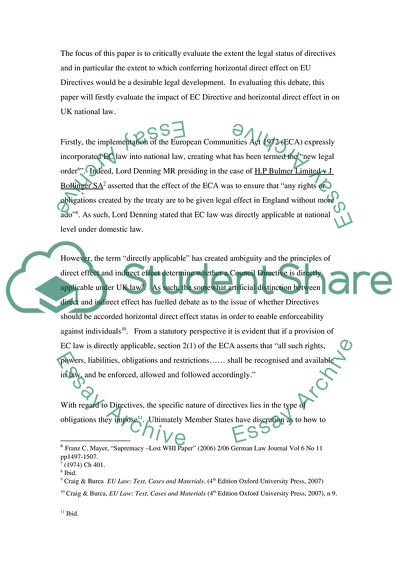Cite this document
(Horizontal DIrect Effect to European Union Assignment, n.d.)
Horizontal DIrect Effect to European Union Assignment. Retrieved from https://studentshare.org/macro-microeconomics/1733834-to-what-extent-would-conferral-of-horizontal-direct-effect-to-european-union-directives-be-a-desirable-legal-development
Horizontal DIrect Effect to European Union Assignment. Retrieved from https://studentshare.org/macro-microeconomics/1733834-to-what-extent-would-conferral-of-horizontal-direct-effect-to-european-union-directives-be-a-desirable-legal-development
(Horizontal DIrect Effect to European Union Assignment)
Horizontal DIrect Effect to European Union Assignment. https://studentshare.org/macro-microeconomics/1733834-to-what-extent-would-conferral-of-horizontal-direct-effect-to-european-union-directives-be-a-desirable-legal-development.
Horizontal DIrect Effect to European Union Assignment. https://studentshare.org/macro-microeconomics/1733834-to-what-extent-would-conferral-of-horizontal-direct-effect-to-european-union-directives-be-a-desirable-legal-development.
“Horizontal DIrect Effect to European Union Assignment”. https://studentshare.org/macro-microeconomics/1733834-to-what-extent-would-conferral-of-horizontal-direct-effect-to-european-union-directives-be-a-desirable-legal-development.


